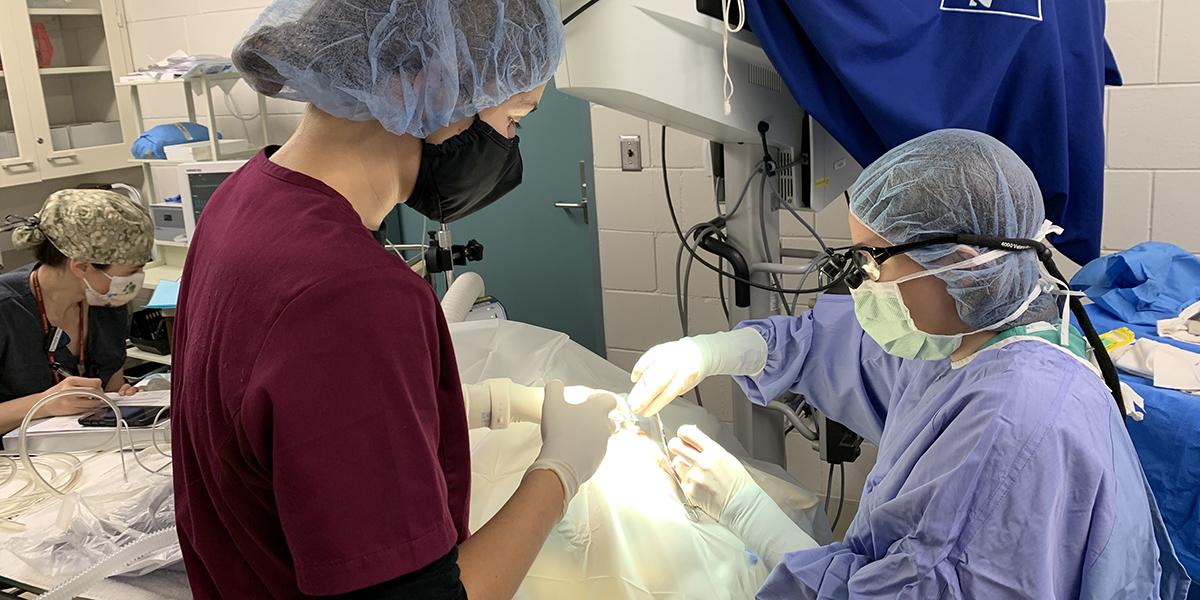Trained for excellence
New specialist position puts focus on enhanced training, employee retention

New specialist position puts focus on enhanced training, employee retention
Natalya Mahan (left), veterinary technician assistant, assists Jordan Roberts, DVM, MS, with a surgery to treat cherry eye, a condition caused by inflammation of a dog's third eyelid.
A new position debuting this past summer at the Veterinary Medical Center (VMC) is strengthening the employee onboarding and development experience for certified veterinary technicians (CVT) and veterinary technician assistants (VTA).
The new role, called a technician training specialist (TTS), leads training efforts for existing VMC staff as well as new hires, with a focus on consistency of skills and excellence. The first two employees named to the position are Darcy Mattson, CVT, and Hannah Knowlan, CVT. They are supported by Amy Eastman, CVT, of the emergency and critical care service.
The TTS team will perform hands-on training in each medical service area regarding patient care skills, organizational structure, and the VMC’s mission as well as on technology ranging from telemetry to medical equipment to medical records software.
The new position comes as the caseload at VMC continues to increase and veterinary technician shortages are felt throughout the state of Minnesota. Demand for veterinary services has skyrocketed across the country as many people welcomed new pets into their homes during the pandemic or deferred animal health visits due to quarantine shutdowns.
In Minnesota, the shortage is exacerbated by several technician training programs shuttering their doors over the past several years. With an ever-growing caseload, attracting and keeping talent is a priority for the VMC and other veterinary practices. Staff sees the TTS team as one means of addressing that need.
The training provided by the TTS team is designed to create an environment where all stakeholders feel supported as they learn. The team also seeks to balance the priorities of teaching DVM students and providing high-quality patient care training to new employees.
According to Eastman, who has 20 years of experience working as a technician at the University and in private practice, the new role also plays an important part in employee retention.
Having someone they know they can ask questions about anything makes it less intimidating. Having someone right beside them for a while can make them feel more comfortable and confident.
Amy Eastman
“If a new CVT or VTA feels overwhelmed or feels intimidated, they are less likely to stay in their new role,” she says. “Having someone they know they can ask questions about anything makes it less intimidating. Having someone right beside them for a while can make them feel more comfortable and confident.”
As part of getting the positions off the ground, training staff sent out a survey to establish a baseline understanding of what is going well in the VMC, identify training opportunities, and determine what each medical service would like to see from the training team.
The VMC launched the TTS team in August, but Eastman says it’s too early to measure its impact but is hopeful for the initiative’s future.
“On one hand, it’s never a bad thing to train people, but the role is still so new and hopefully in time it will be more of a formal program,” she says.